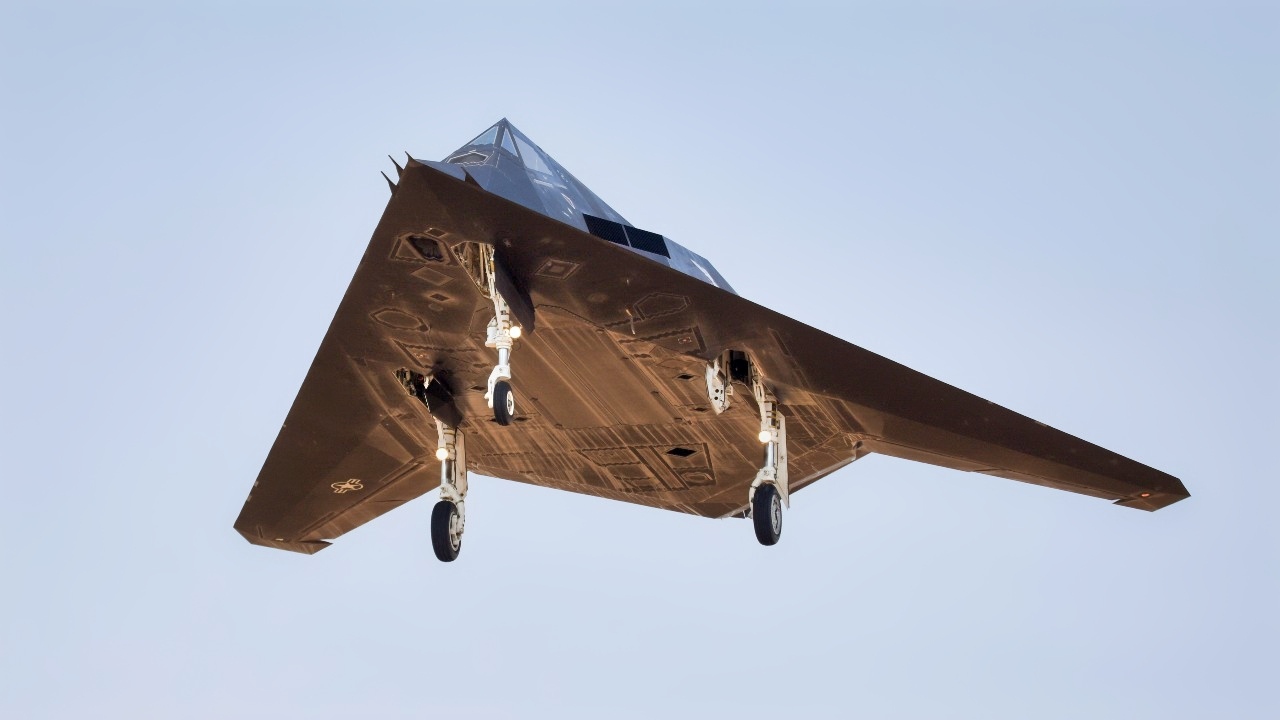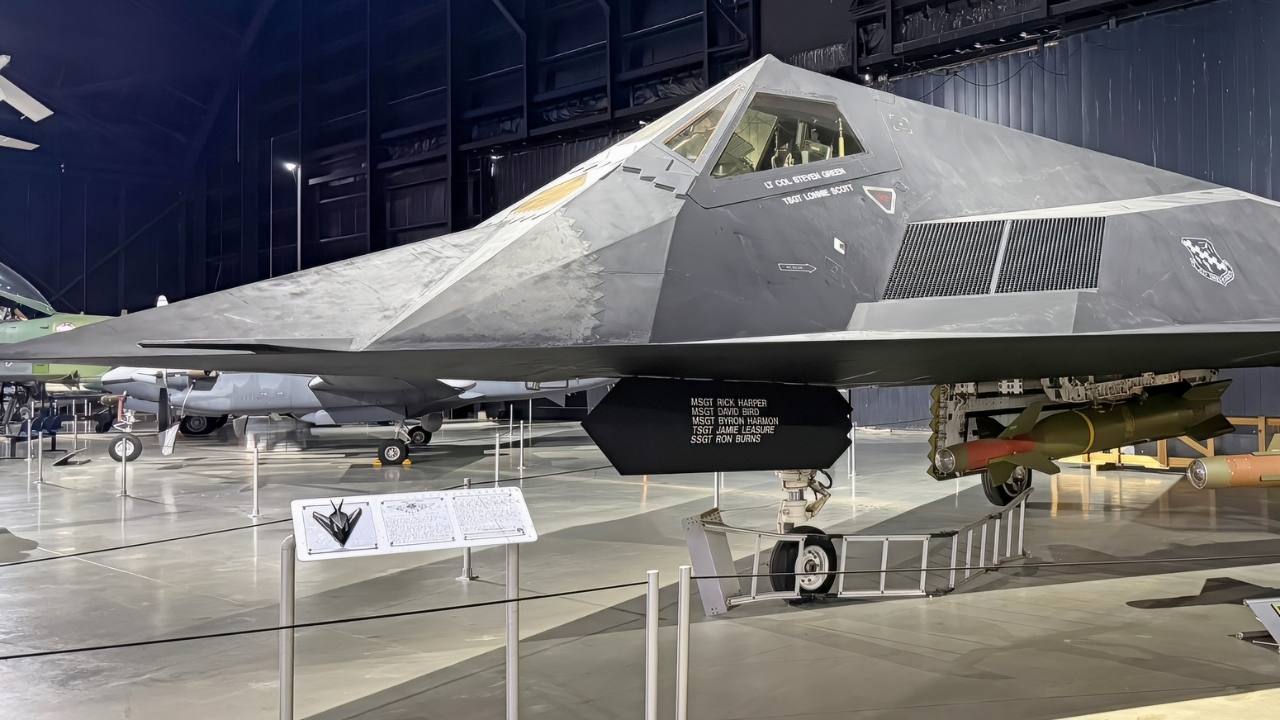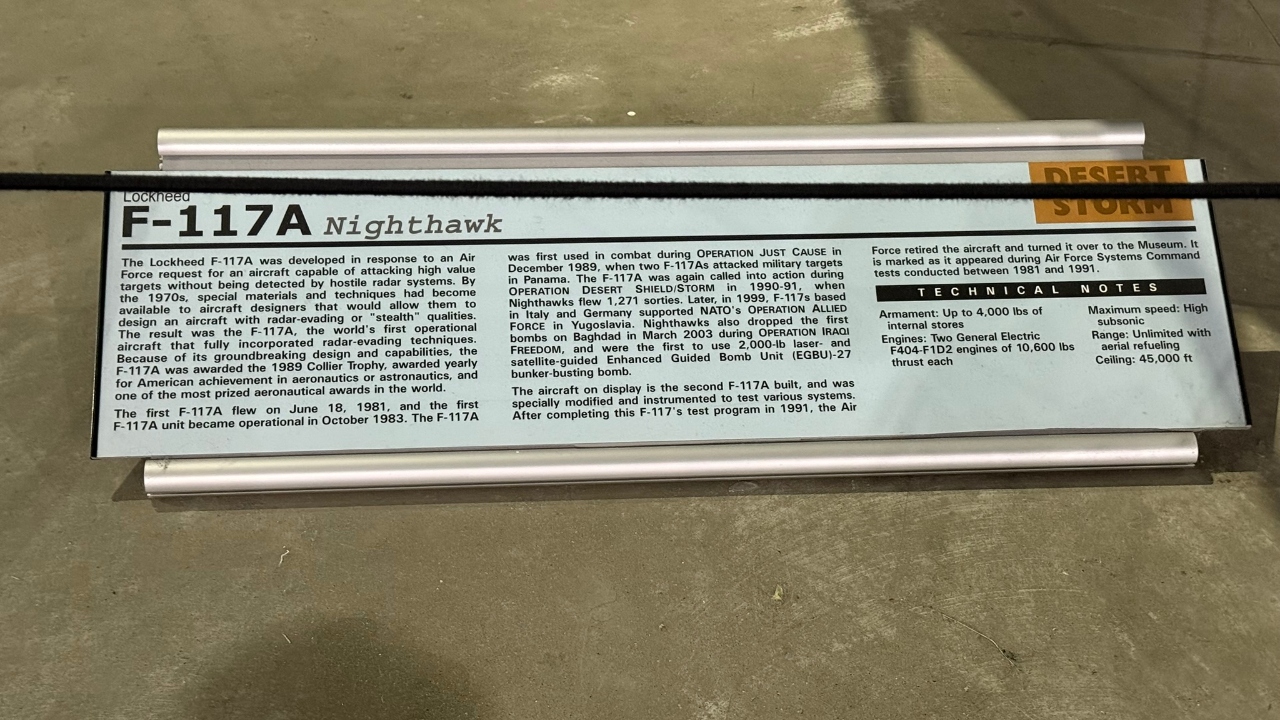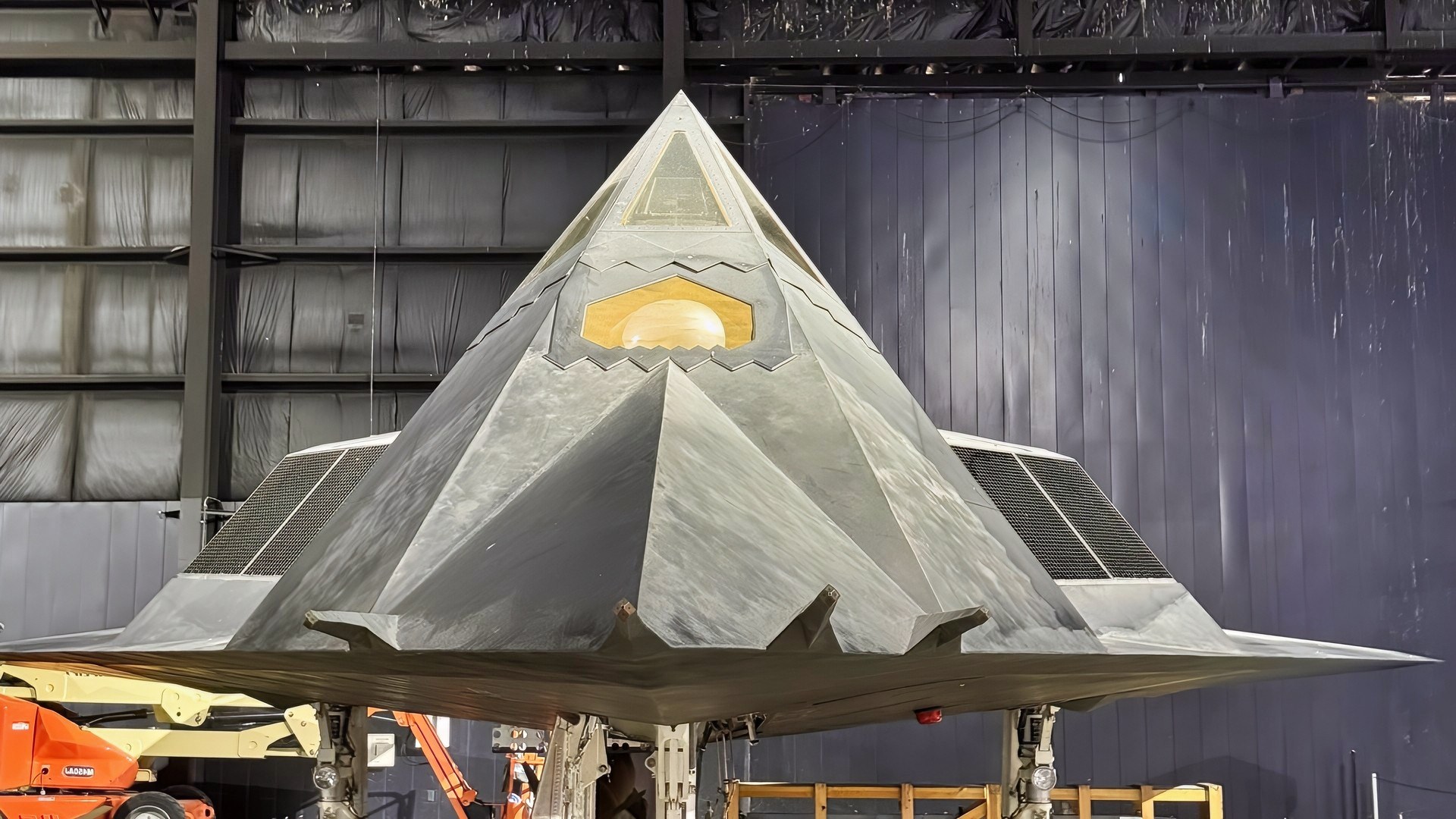Key Points and Summary – Officially retired in 2008, the F-117A Nighthawk never truly left service. A small cadre continues flying from the Tonopah/Nellis complex to act as stealth “red air,” stress U.S. air defenses, and give fighter crews realistic reps against low-observable threats.
-The jets also double as flying laboratories for radar, coatings, and counter-stealth testing—letting engineers trial new ideas on a known stealth airframe without exposing classified programs like NGAD. Regular sightings on Southwest training routes and Air Force acknowledgements confirm the role.

F-117 Nighthawk Stealth Fighter. Image Credit: Creative Commons.

An F-117 Nighthawk lands at the Fresno Yosemite International Airport, Sept. 15, 2021, after conducting a training mission with the local Air National Guard unit. Two F-117 Nighthawks are participating in dissimilar air combat training missions this week along with F-15 pilots from the 144th Fighter Wing in Fresno, Calif. (U.S. Air National Guard photo by Capt. Jason Sanchez)
-Cheap to keep and uniquely useful, the Nighthawk’s second life helps preserve America’s edge in stealth and anti-stealth, operationally today.
Here’s Why the F-117A Nighthawk Still Flies 20 Years After Retirement
The F-117A Nighthawk may have been officially retired from frontline service in 2008, but that’s not where its story ended.
Technically, the retirement closed a 25-year chapter for the world’s very first operational stealth strike fighter, but it never actually vanished from the skies.
Ever since then, there have been sightings, photographs, and even official U.S. Air Force acknowledgements that prove the Nighthawk continues to fly. And, it primarily flies out of Nevada.
It may seem strange, but there’s logic to the decision.
The F-117 remains a uniquely valuable tool for training against low-observable threats, radar ,and counter-stealth experimentation, and assisting with testing new and experimental platforms.
So while the Nighthawk is no longer in active service, the U.S. Air Force continues to maintain some of the planes and operate them out of one of the world’s most famous bases as part of a broader effort to sustain American air and stealth dominance.
What Made the Nighthawk Special
Developed by Lockheed’s Skunk Works, the F-117 first flew in 1981 and was publicly acknowledged in 1988.
The aircraft was revolutionary, ushering in a new era of operational stealth.

F-117 Stealth Fighter National Security Journal Image.

F-117 Nighthawk July 2025 National Security Journal Image HD. Photo by Harry J. Kazianis.
Its shaping and radar-absorbent materials dramatically reduced its radar cross-section, making precision night strikes possible even in heavily defended airspace.
The aircraft then proceeded from Panama in 1989 to Desert Storm in 1991.
Although often called a “stealth fighter,” the Nighthawk was actually optimized primarily as a subsonic, single-seat strike platform – with stealth abilities.
The Air Force later opted for more advanced stealth aircraft—the B-2, F-22, and F-35—forcing the Nighthawks out of service.
Not only were the platforms aging, but they were also simply too costly to operate and maintain compared to newer designs.
Retirement, Storage, and the Nighthawk’s Rebirth
Following official retirement ceremonies in 2008, most F-117s were placed in climate-controlled storage at the Tonopah Test Range (TTR) to ensure the aircraft remained safe to operate and in a constant, recallable condition.
But while most went into storage, a small number technically remained in operation.
Reports and official documentation over the years have proven this, including open-source photographs showing the Nighthawk flying low-level routes in California and operating around Nellis/Tonopah.
The Nighthawk has even been observed flying alongside frontline fighters during exercises. For example, in 2019 and 2020, F-117s were repeatedly observed acting as stealthy “red air”—simulating an enemy or adversary force—against F-15s and F-22s.
Since then, their appearances have become more frequent, and any secrecy around their operation has truly disappeared.
In April 024, two F-117s were photographed on the Sidewinder Low-Level Training Route in Southern California, once again proving that these “retired” jets still support training across the U.S. Southwest.
Why the Air Force Loves the Nighthawk In 4 Words: Years of Usefullness Left
In most instances, retired aircraft may remain in storage or be moved to museums.
But the Nighthawk has proven itself capable enough to serve as both an asset for training and a testbed for new platforms.
As global air forces begin to field their own low-observable aircraft and cruise missiles, U.S. aircrews and ground-based air defenses need to prepare for combat.
That means realistic simulations and practice in detecting and fighting stealthy threats. In this environment, the Nighthawk is perfect; it might not be the stealthiest platform ever made, but it is stealthy, and adversaries’ stealth platforms are no proper match to American assets anyway.
An actual stealth airframe – even one from the first generation – presents the kinds of signatures that are difficult to replicate with pods or even “red air” jets. So, using these F-117s as stealth aggressors provides the best possible training opportunity for crews and pilots.
And then there’s the matter of ongoing stealth development, counter-stealth research, and the testing of new low-observable materials.

F-117A Nighthawk Sign Image Taken at USAF Museum. Image Credit: National Security Journal.
The Nighthawk is already fully paid for and designed to work as a stealth platform, making it ideal for testing new materials and technologies. Lockheed Martin and the U.S. Air Force both operate radar testing facilities, such as the Helendale Radar Cross Section (RCS) Range, where stealth coatings and radar-detection technologies are evaluated.
In these kinds of environments, an F-117 allows engineers to test these new systems and materials on a known airframe.
In doing so, engineers can measure how well new radars detect stealth targets and how new coatings or shaping features reduce radar visibility – all without exposing the classified designs of next-generation aircraft like NGAD.
Using the Nighthawk makes sense.
This iconic aircraft now gives engineers and pilots a real-world stealth laboratory and is shaping how America detects and evades enemy aircraft in the coming decades.
About the Author:
Jack Buckby is a British author, counter-extremism researcher, and journalist based in New York. Reporting on the U.K., Europe, and the U.S., he works to analyze and understand left-wing and right-wing radicalization, and reports on Western governments’ approaches to the pressing issues of today. His books and research papers explore these themes and propose pragmatic solutions to our increasingly polarized society. His latest book is The Truth Teller: RFK Jr. and the Case for a Post-Partisan Presidency.
More Military
‘Skipper, We Have Been Hit’: Tiny Nuclear Sub ‘Sank’ $4.5 Billion U.S. Navy Aircraft Carrier
China’s Military ‘Quantum Leap’ Doesn’t Add Up
Russia’s Air Defenses Are Springing Leaks—and Ukraine Is Exploiting Them
Japan Might Be Ready to Fight for Taiwan. Would America Do the Same?










